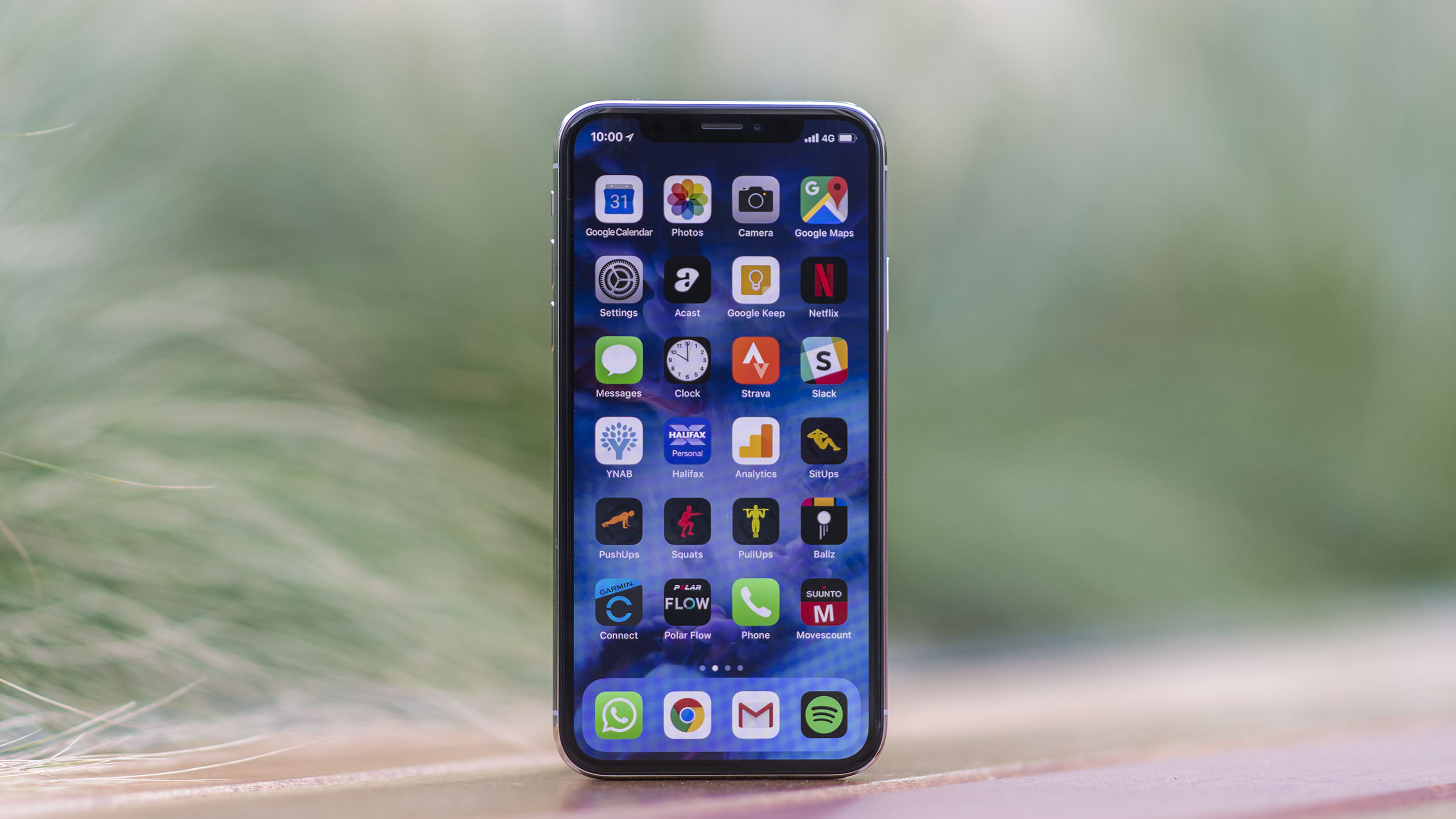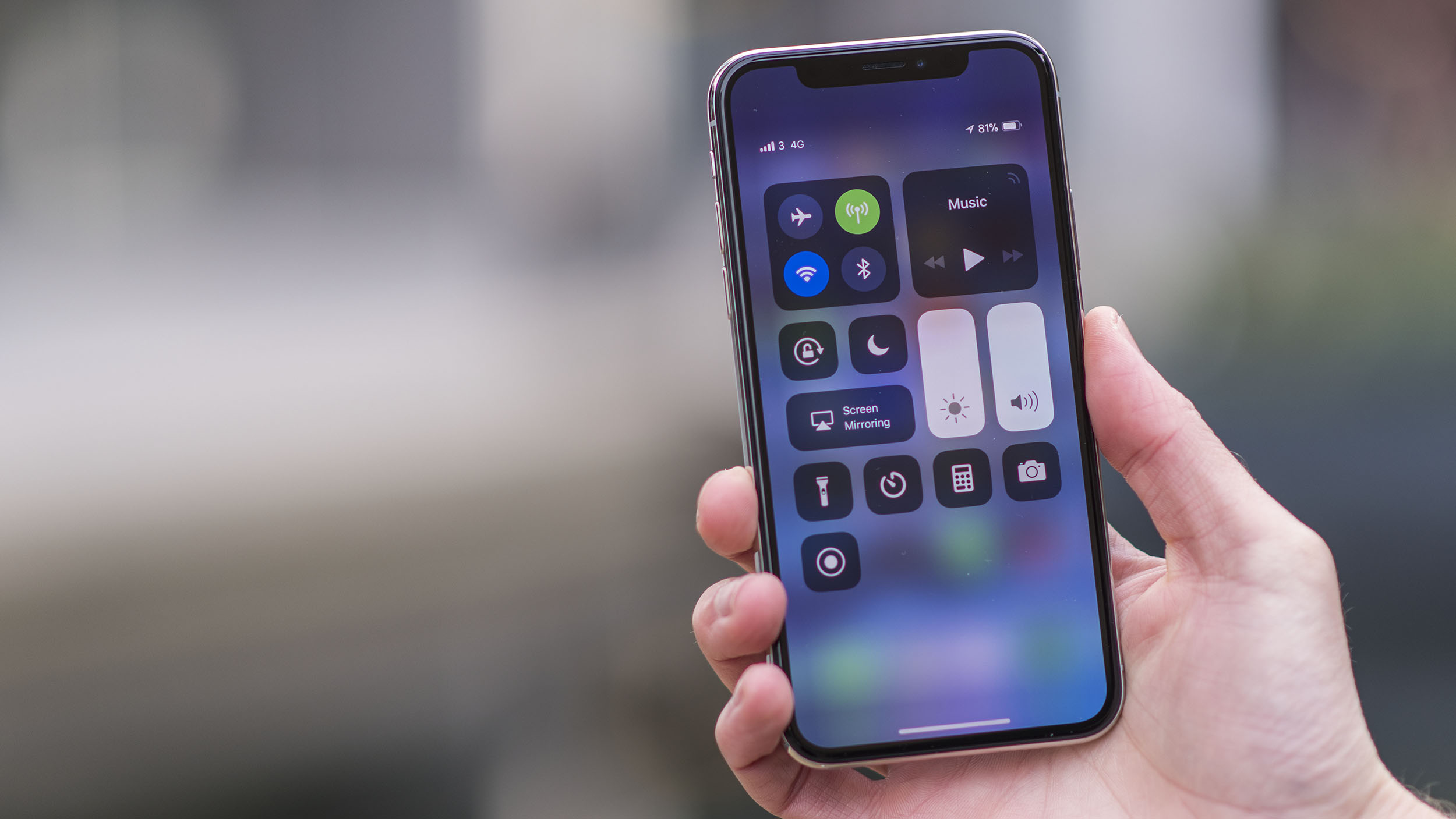
Apple's headline claim for the iPhone X is that "it's all screen". Just as exciting as the bezel-busting dimensions of this 5.8-inch Super Retina display, however, is the fact that it utilizes OLED technology.
Every single iPhone up to and including the iPhone 8 and iPhone 8 Plus has been fronted by an LCD (liquid-crystal display). Some of Apple's Android competitors, however, switched to OLED for their flagship phones long ago.
The original Samsung Galaxy S shipped with an OLED display in 2010, and every top-tier Samsung phone since has followed suit. In 2017 alone the Samsung Galaxy S8, LG V30, Google Pixel 2 and OnePlus 5T have all gone with OLED, to name just four examples.
This means that the iPhone X has arrived decidedly late to the OLED party.
So what exactly is the deal with OLED, and why is Apple finally showing interest in it?

What is OLED?
OLED stands for Organic Light-Emitting Diode. An OLED display is essentially made up of an organic carbon-based film hooked up to a pair of electrodes.
Those electrodes pass a current through the film, causing the individual pixels within it to light up.
Sign up for breaking news, reviews, opinion, top tech deals, and more.
This latter point is the key difference between OLED and LCD technology. LCD requires an additional backlight component to create an image, whereas the pixels in a self-contained OLED display light up individually.
Benefits of OLED
There are several key advantages to OLED over LCD technology. Physically speaking, the fact that there's no backlight component enables OLED panels to be thinner, lighter, and more flexible than their LCD counterparts.
They're ideal for compact smartphones and super-thin TVs, and are perfectly suited to modern edge-to-edge display designs where the panel can be bent around corners if necessary.
More importantly, the fact that OLED pixels are individually lit means that you can achieve true blacks and much greater color contrast.
In any LCD panel, the presence of a backlight provides some measure of lighting to every single pixel, even when none is required. This means that even ostensibly black areas of a picture take on a slightly greyish tone. That’s not so with OLED, where black truly means black.
Tied in to that point, OLED displays posses a much higher contrast ratio than LCD. Apple claims that the iPhone X has a staggering 1,000,000:1 contrast ratio, compared to just 1300:1 on the iPhone 8 Plus.
This results in a much more vivid, color-rich picture for the OLED-packing device. It's a key reason why the iPhone X is the only iPhone to date that can display (rather than just support) true high dynamic range (HDR) video content. There are simply more gradients of visible color at its disposal.
Finally, OLED panels tend to be more energy-efficient than LCD equivalents, making them better suited to larger display sizes and lessening the impact on battery life.

Why Apple was late to OLED
Given all of these clear advantages, you might wonder why Apple waited so many years to bring OLED to iPhone. Apple has attempted to explain its tardiness by claiming that the iPhone X is "the first OLED screen that rises to the standards of iPhone."
At Apple's iPhone X launch event, the company directly referenced some of the technical trade-offs that previous OLED displays have had to make.
These include a generally lower overall brightness level compared to LCD, which can have an adverse impact when you're making a device that has to be usable outside in direct sunlight.
Sure enough, the iPhone X OLED display can produce a full-screen brightness of 634 nits, whereas the Samsung Galaxy Note 8 - previously the undisputed OLED champ - can hit 560 nits.
Apple also identifies the long-standing tendency for OLED panels to be too vivid for their own good, trampling on color accuracy with their hyper-real tones.
This particular complaint might seem disingenuous to some. After all, Samsung, by far the biggest smartphone OLED display supplier, has managed to all but overcome color accuracy issues in its recent flagship phones.
You can see that the OLED manufacturing process remains a challenge, however, by the poor reception the Google Pixel 2 XL's LG-made OLED display has received of late. It has prompted Google to issue an update with further calibration options.
Apple's cautiousness in adopting OLED is shown to be more than a soundbite by the fact that Samsung merely manufactures the iPhone X display. It's far from an off-the-shelf component, with Apple taking direct control of the display's design and implementation, even going so far as to individually calibrate each screen before it leaves the factory.

The results of this hands-on approach appears to have been vindicated. We found the iPhone X display to be "leaps ahead of the iPhone 8 and 8 Plus" in our review. Elsewhere, specialist display website DisplayMate reckons that the iPhone X display is "the most color accurate display that we have ever measured."
There are also certain issues inherent to OLED technology that Apple didn’t directly reference in its iPhone X announcement, but which have since been addressed.
These include the fact that OLED displays tend to shift tone when you view them from an angle. All OLED displays are prone to suffering from some degree of burn-in too, which can leave ghostly screen elements on the display after the fact.
In both cases Apple claims to have worked to reduce the effects:
"If you look at an OLED display off-angle, you might notice slight shifts in color and hue. This is a characteristic of OLED and is normal behavior. With extended long-term use, OLED displays can also show slight visual changes.
"This is also expected behavior and can include 'image persistence' or 'burn-in,' where the display shows a faint remnant of an image even after a new image appears on the screen.
"This can occur in more extreme cases such as when the same high contrast image is continuously displayed for prolonged periods of time. We've engineered the Super Retina display to be the best in the industry in reducing the effects of OLED 'burn-in'."
In other words, there are still issues with OLED, but Apple has worked to mitigate them in the iPhone X.
The future of Apple and OLED
So what next for Apple and OLED? Is its adoption of the technology merely a special effort for the expensive ten-year-anniversary iPhone X model?
That's highly unlikely. Apple isn't in the habit of adopting and dropping technology on a whim unless something clearly better becomes viable. Right now, OLED is the best mass market screen technology available.
Besides which, Apple has actually already produced three smart devices with OLED panels prior to the iPhone X hitting shops. All three generations of Apple Watch, which initially launched back in 2015, sport the vibrant screen technology.
Far from Apple abandoning OLED, we can probably expect the opposite to happen. Apple's use of LCD in its iPhones is on borrowed time, with the iPhone 8 family likely to be one of the last Apple phones to feature the aging technology.
Now that we've seen what Apple can do with OLED, it's unthinkable that the company would take a step back - in fact all models of the iPhone 9 might use it, according to some analysts.

But one thing that appears to be delaying Apple's wholesale adoption of OLED is something that's been hinted at already. Samsung all but controls the supply line of top quality OLED smartphone displays, with a 95% share of the market.
Apple traditionally doesn't like being beholden to any single supplier of a component, let alone to its biggest and bitterest rival. It strips the company of control over both supply and cost.
Looking at Apple's history, then, we wouldn't be surprised to see the company invest heavily in alternative sources of OLED technology. Along those lines, reports from July 2017 suggested that Apple was pumping $2.7 billion into LG Display with a view to future iPhone OLED panel production.
The question isn't if Apple will stick with OLED, but what it will do with the technology in future. Consider, for example, how Apple's adoption of OLED might influence the design of future iOS versions.
On Android, many manufacturers have adopted a discrete lock screen notification system that utilizes OLED's unique attributes to display only the bare minimum of information at a glance. It's possible that Apple would look to incorporate something similar once LCD is phased out of the iPhone range.
Whichever direction Apple decides to go, the iPhone X is set to be the first of many OLED smartphones from the tech giant. It's taken a while to get here, but the future's looking particularly vibrant for the world's most popular smartphone.

Jon is a freelance journalist who has been covering tech since the dawn of the smartphone era. Besides TechRadar, his words and pictures have appeared in The Telegraph, ShortList, Tech Advisor, Trusted Reviews, Expert Reviews, and more. He largely covers consumer technology, with a particular focus on smartphones and tablets. However, he's also been known to dabble in the worlds of entertainment and video games.